#1959 World Championship
Explore tagged Tumblr posts
Text
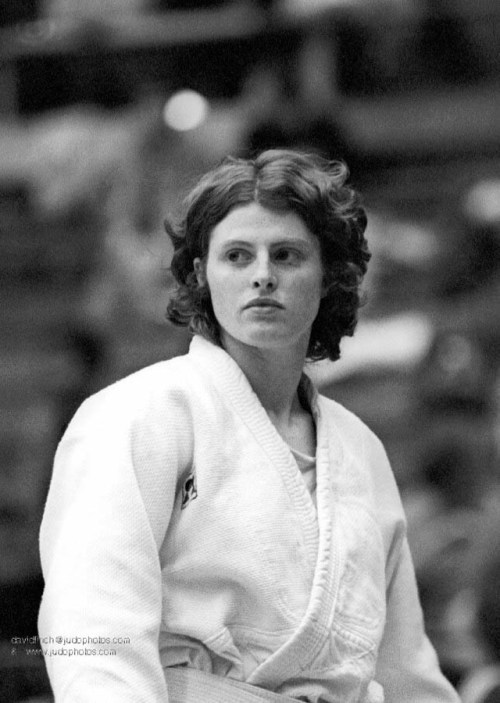
Rena Kanokogi inspired the sports world to think differently about the notion of women in competitive sports. As a young girl, she learned judo from somebody in her Brooklyn neighbourhood. Her desires to compete in the city’s judo clubs were met by resistance; the club owners told Rena that judo was a man’s sport and that women were too frail and weak to compete.
Not one to quit on her goals, in 1959, Rena posed as a man to enter the New York State YMCA judo championships. Not only did Rena prove herself as an equal, she beat every single man she fought and won a gold medal. After being asked if she was a woman, she was forced to return the medal. “Had I said no, I don’t think women’s judo would have been in the Olympics. It instilled a feeling in me that no woman should have to go through this again,” she said.
With no options to compete in the United States, Rena went to Tokyo where she became the first woman at he main dojo. It was here that she met her husband, Ryohei Kanokogi. The duo soon returned to the United States where they started to coach judo and build the sport for women. In 1964, judo became an Olympic sport for men; Rena responded by threatening legal action if women were not treated equally and allowed to participate.
Women’s judo eventually became an Olympic sport in 1984 with Rena as the U.S. coach.
405 notes
·
View notes
Text
Earlene Dennis Brown
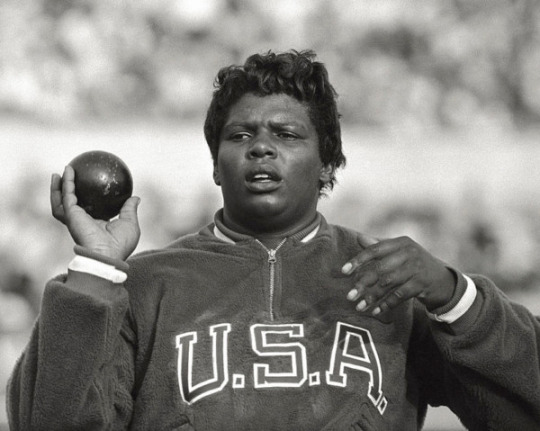
Earlene Dennis Brown, a three-time Olympian, was the first African American woman to win a medal in the shot put. Throughout her life Brown excelled in a variety of sports, gaining attention, recognition, and honors. She is the only shot-putter to compete in three consecutive Olympics (1956, 1960, 1964). Brown won Olympic bronze for Women’s shot put in 1960; was Amateur Athletic Union Champion in shot put (1956-62, 1964); won Amateur Athletic Union Championship, discus (1958-59, 1961); won gold medal in shot put, silver medal in discus, USA-USSR dual meet (1958); was shot put and discus champion, Pan-American Games (1959); and placed 12th in shot put, Tokyo Olympics (1964).
Earlene Dennis, born July 11, 1935, in Latexo, Texas to Espenola Tillis Dennis, a domestic servant, and Willie Dennis, a semipro baseball player with the Negro League in Texas. When her parents separated in 1938, Dennis remained with her mother and they moved to Los Angeles in 1945. Dennis’s mother married Julius Walker in 1946. Dennis attended Jordan High School in South Central Los Angeles, where she excelled in track and field. Her athletic ability was noticed by many, including Adeline Valdez, Dennis’s high school gym teacher, Josephine Spearman, and Coach Clarence Mackey, who tried to get her to compete in the Helsinki Olympics (in 1952 in Helsinki, Finland). Valdez is credited with putting the first discus in Dennis’ hands while her history teacher taught her to shot put. Before competing in shot put and discus, Dennis anchored the relay team.

In 1956, Brown finished in the top ten in the shot put and the discus. In 1958 Brown received the #1 world ranking and became the first American to break the 50-foot barrier. Brown won gold medals in the shot put as well as discus events at the Pan American Games in 1959. At the Tokyo Olympics in 1964 Brown placed 12th in the shot put.
Brown retired from the shot put competition in 1965. The same year she took up another sport, roller derby. Brown’s career in skating began as a blocker for the New York Bombers.
In 1975, Brown retired from all athletic ventures and worked as a beautician to provide for herself and family. On May 1, 1983, Earlene Dennis Brown passed away in Compton, California at the age of 47. On December 1, 2005, Earlene Brown was posthumously inducted in the National Track and Field Hall of Fame by the USA Track and Field (USATF) Association during the Jesse Owens Awards and the Hall of Fame Induction Ceremony in Jacksonville, Florida.
103 notes
·
View notes
Text
October TV Show Watchlist

Kid-Friendly
Hilda (2018-2023)
The Good Witch (2015-2021)
Gravity Falls (2012-2016)
The Owl House (2020-2023)
Over the Garden Wall (2014)
Bewitched (1964-1972)
The Halloween Baking Championship (2015-present)
Sabrina the Teenage Witch (1996-2003)
I Dream of Jeannie (1965-1970)
Halloween Wars (2011-present)
Goosebumps (1995-1998)
Goosebumps (2023-present)
Are You Afraid of the Dark? (1990-2000)
Warehouse 13 (2009-2014)
Courage the Cowardly Dog (1999-2002)
That's So Raven (2003-2007)
The Secret World of Alex Mack (1994)
Tales From the Cryptkeeper (1993-1999)
Scooby-Doo, Where Are You! (1969-1970)
The New Scooby-Doo Movies (1972-1973)
The Scooby-Doo Show (1976-1978)
Scooby-Doo and Scrappy-Doo (1979-1980)
Scooby-Doo and Scrappy-Doo (1980-1982)
The New Scooby and Scrappy-Doo Show (1983-1984)
The 13 Ghosts of Scooby-Doo (1985)
A Pup Named Scooby-Doo (1988-1991)
What's New, Scooby-Doo? (2002-2006)
Shaggy & Scooby-Doo Get a Clue! (2006-2008)
Scooby-Doo! Mystery Incorporated (2010-2013)
Scooby-Doo and Guess Who? (2019-2021)

Younger Teens & Up
Anne with an E (2017-2019)
Teen Wolf (2011-2017)
Spice and Wolf (2008-2009)
Sleepy Hollow (2013-2017)
The Twilight Zone (1959-1964)
The Twilight Zone (2019-2020)
The X Files (1993-2002)
The X-Files (2018)
Charmed (1998-2006)
Charmed (2018-2022)
Stranger Things (2016-present)
Supernatural (2005-2020)
Wednesday (2022)
Pushing Daisies (2007-2009)
All of Us are Dead (2022-present)
Murder She Wrote (1984-1996)

Older Teens & Adult
The Strain (2014-2017)
Columbo (1968-2003)
Chilling Adventures of Sabrina (2018-2020)
Todd McFarlane's Spawn (1997-1999)
Only Murders in the Building (2021-present)
Jonathan Strange & Mr. Norrell (2015)
Dead Like Me (2003-2004)
Midnight Mass (2021)
True Detective (2014-present)
Lovecraft Country (2020)
Santa Clarita Diet (2017-2019)
The Walking Dead (2010-2022)
Fear the Walking Dead (2015-2023)
Love, Death & Robots (2019-present)
Tales From the Crypt (1989-1996)
Reginald the Vampire (2022-2024)
The Last of Us (2023-present)
Ghosts (2019-2023)
Ghosts (2021-present)
Castlevania (2017-present)
The Vampire Diaries (2009-2017)
Being Human (2011-2014)
Twin Peaks (1990-1991)
Twin Peaks: The Return (2017)
A Discovery of Witches (2018-2022)
What We Do in the Shadows (2019-2024)
True Blood (2008-2014)
Interview With the Vampire (2022-present)
Dexter (2006-2013)
Dexter: New Blood (2021-2022)
The Haunting of Hill House (2018)
The Haunting of Bly Manor (2020)
Scare Tactics (2003-2013)
Chucky (2021-2024)
American Horror Story (2011-present)
American Horror Stories (2021-present)

Ghost Hunting Reality Shows
Fear (2000-2002)
Scariest Places on Earth (2000-2006)
Portals to Hell (2019-2022)
Paranormal State (2007-2011)
Ghost Adventures (2008-present)
Ghost Hunters (2004-2016)
Ghost Hunters (2019-2023)
Ghost Hunters International (2008-2012)
Destination Fear (2019-2023)
Ghost Brothers: Haunted Houseguests (2019)
Ghost Brothers: Lights Out (2021)
Paranormal Witness (2011-2016)
The Dead Files (2011-present)
Kindred Spirits (2016-present)
The Holzer Files (2019-present)
Deep South Paranormal (2010-2013)
Ghost Nation (2019-present)
Haunting in the Heartland (2020)

Bonus Round: Web Series and Podcasts
Marble Hornets (2009-2014)
Welcome to Nightvale (2012-present)
The Magnus Archives (2016-2021)
The Magnus Protocol (2021-present)
25 notes
·
View notes
Text
A moment from a Fischer-Tal game, played during the world championship candidates tournament in 1959, as told by Tal:
It was here that a widely-known psychological duel took place between us. Every player has his own habit: one will first make his move and then write it down, while another will do things the other way round. In our game Fischer first wrote down the move 22.Rae1!, without doubt the strongest, and wrote it, not in his usual English notation, but in European, almost Russian! Then he not very deftly pushed the scoresheet towards me. ‘He’s asking for an endorsement’, I thought to myself, but how was I to react? To frown was impossible, if I smiled he would suspect ‘trickery’, and so I did the natural thing. I got up and began to calmly walk up and down the stage. I met Petrosian, made some joke to him, and he replied. The 15-year-old Fischer, who was essentially still only a large child, sat with a confused expression on his face, looking first at the front row of the spectators where his second was sitting, and then at me. Then he wrote down another move: 22.Qc6+?and after 22…Rd7 23.Rae1+ Be7 24.Rxf7 Kxf7 25.Qe6+ Kf8! 26. Qxd7 Qd6 I held on to my extra piece and adjourned the game in a won position. When I later asked Fischer why he hadn’t played 22.Rae1, he replied, “Well, you laughed when I wrote it down!”
Sidenote, Bobby Fischer was 16 in 1959 when this game was played, Tal has his age wrong.
[Images of the position under cut]

The position before move 22, Fischer’s comments on the game seem to imply that white is winning and would have maintained the advantage with Ra-e1; Stockfish says black is winning and Ra-e1 would have made it even.

The moves 22.Qc6 Rd7 23.Rae1+ Be7 24.Rxf7 Kxf7 25.Qe6+ Kf8 26. Qxd7 Qd6, after which white can only aim for a draw and ultimately ended up losing.
The Chessbase article that I used as the source for this allows you to click through the whole game, with the annotation from various players and potential variations alongside the moves, def worth checking out.
#chess#bobby fischer#mikhail tal#the bit about bobby being a large child is so cute#and it’s insane that he was in the candidates at that age
14 notes
·
View notes
Text
Rivals: Jack Brabham v Stirling Moss
Alright, this is part of my series on F1 rivalries throughout history. Enjoy!

(Moss on the left, Brabham on the right)
So, sticking with the more classic era, I wanted to discuss the Brabham and Moss rivalry of the 50s and 60s. This rivalry, like many later, would be a result of differing driving styles, methods, and philosophies, but above all else an almost equal level of skill that led the two to be each others main competitors.
These two drivers knew each other before they entered F1, crossing paths multiple times in other motorsport series. Brabham, from Australia, was a methodical, collected, and engineering-driven driver, who played a massive part in the development of F1 cars. His personality was also the more reserved one, being quietly determined for most of his career. Moss, an Brit, on the other hand was regarded as the most naturally gifted of his generation. He was confident, aggressive, instinctive, and had a rather flamboyant personality.
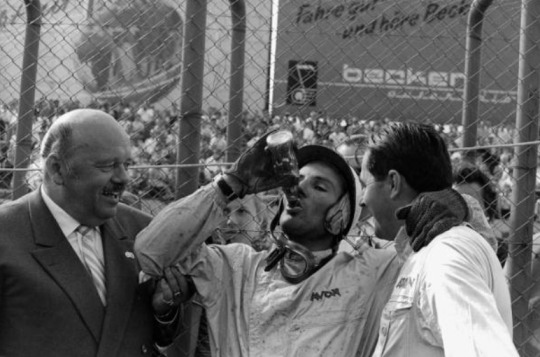
(Moss taking a swig of a drink with his arm around Brabham)
Straight away you can see the heavy contrast between them. But how did it start? Well, in the late 1950s these two were at the top of the field. They had been competing for years at this point, but it wasn't until 1959 that they truly fought for the title. This was also a big technological shift in F1, which added to the complexity of the season. Brabham's consistency throughout the season would win him the title, but Moss put in some fantastic races and wins, memorably a brilliant Monaco GP. But when Moss had to retire form the US GP due to mechanical failure, the title was Brabham's.

(1960, Brabham leads with Moss behind)
The rivalry continued in 1960, and although Brabham dominated (winning five races) he had to battle Moss the entire way. Their contrasting fortunes was a big part of this year, as Brabham seemed on top of the world but Moss continued to suffer more mechanical problems with his car. It seemed like this rivalry was destined to remain this way, as Moss' car continuously showed as a lesser one compared to Brabham. This did not stop Moss from fighting for wins, which displays his incredible skill.

(Brabham in 1961)
1961 and 1962 were much the same, but 1962 saw Brabham found his own F1 team, Brabham Racing. In this he took a much more engineering side to F1, while still driving. 1962 also saw Moss get into a near fatal crash, which marked the end of his F1 career.
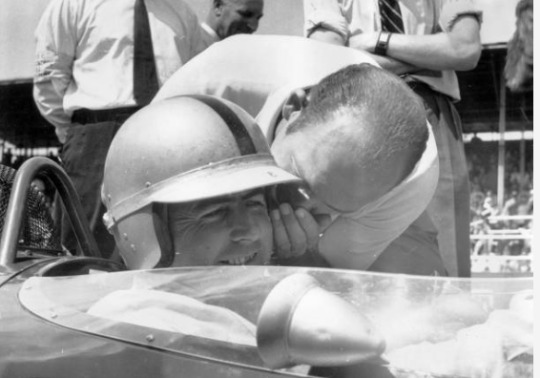
(Moss whispering in Brabham's ear, allegedly with advice, right before a 1963 race)
Throughout all of this the two drivers had the utmost respect for the other, much like Ascari and Fangio. They openly admired each other and had a strong understanding of how the other driver operated. Moss often praised Brabham's technical prowess, and Brabham lauded Moss' natural skills, saying he was often the fastest driver on the grid. Beyond that, they were also good friends. Brabham went down as one of the greatest technical drivers in F1 history, and Moss as one of the greatest who never won a championship.
They left behind a legacy of technical innovation (Brabham), but also a rise in the prominence of natural talent (Moss). Much like Fangio and Ascari they also created a tradition of opposite style drivers being rivals, and a strong mutual respect that still translates to many modern F1 rivalries.

(Moss and Brabham in 2008)
Alright, that is a quick look at the Brabham v Moss rivalry. Just a note, during this time both drivers were also considered rivals of Juan Manuel Fangio, so just remember that most drivers are heavily connected, and had multiple rivals. I just focus on certain pairings that are particularly memorable and impactful as rivals.
Cheers,
-B
8 notes
·
View notes
Text

Happy birthday Tigran Petrosian (1929-1972)!
One of my favourite chess players who most people haven't heard of, "Iron Tigran" was a Soviet-Armenian chess grandmaster and World Chess Champion from 1963 to 1969. When he beat Boris Spassky to defend his world title in 1966, this was the first time a world champion had beaten their closest rival in match play since the nineteenth century. In 1969 Spassky got revenge and Petrosian lost his title. He continued playing though and continued being a very tricky opponent. In total, was a candidate for the World Chess Championship eight times (1953, 1956, 1959, 1962, 1971, 1974, 1977 and 1980) which means that for EVERY SINGLE WORLD CHAMPIONSHIP BETWEEN 1953 AnD 1980 Petrosian was either the champion or the candidate!!
He also won the Soviet Championship four times (1959, 1961, 1969, and 1975) which, given the quality of Soviet players at the time, was no mean feat. This was, after all, the age of Tal, Botvinnik, Korchnoi, Spassky, Smyslov, and Keres!

Art Zeller, Paul Keres and Tigran Petrosian with the Piatigorskys at the 1963 Piatigorsky Cup, 1963
He was insanely hard to beat, virtually unplayable at times, using a style heavily influenced by Aron Nimzowitsch's book My System and makes me think particularly of Nimzowitsch's dictum "First restrain, next blockade, lastly destroy." In the Mammoth Book of the World's Greatest Chess Games, Graham Burgess writes Petrosian invented:
"a unique playing style that oppnonents found very hard to handle. Often it wasn't even clear what they were fighting against, as Petrosian's deep prophylactic play would be preventing ideas that had not even occurred to them. Once his opponent's active possibilities were neutralized, Petrosian would squeeze relentlessly."
To give an example of how difficult an opponent he was, over the ten Olympiads he played in, he had 79 wins, 50 draws, and only 1 loss. In 1969, his final year as World Champion, he didn't lose a single tournament game.
Sam Copeland breaks down one of his best games with Spassky in the video below and you can check out some more of Petrosian's games here.
youtube
#chess player#chess#Tigran Petrosian#Aron Nimzowitsch#world chess champion#world chess championship#1960s#vintage#chess games#born on this day#happy birthday#Youtube
9 notes
·
View notes
Text
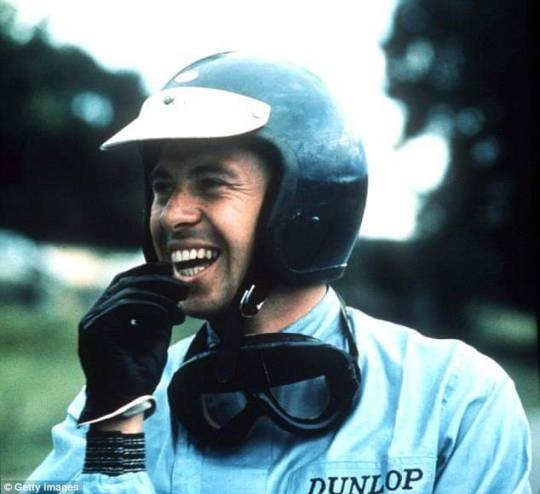



On March 4th 1936 Jim Clark, Formula I World motor racing champion was born in Fife.
Clark was raised on a farm near Duns, close to the border with England along with 4 sisters. After a few years, he was sent to the Loretto School in Musselburgh to finish his education, his main sporting interests being cricket and hockey.
When he was 16, however, his uncle and grandfather both passed away and he was forced to return home. Now, Clark had no dreams of being a racing driver at this point. He knew that it was expected of him, having only sisters, to take over the family business and raise sheep.
One day, in 1956, going to a Young Farmers meeting, Clark overtook another car on his way there. The driver of the overtaken car, Ian Scott-Watson, thought Clark was an idiot for driving as if he was a racing driver and, upon arriving at the Young Farmers meeting, sought out the driver to tell him off. They became best friends in little time and Scott-Watson would be the man responsible for changing Clark’s life completely...
Scott-Watson was doing local racing events in a Sunbeam-Talbot and invited his new best friend to join him. Clark accepted and started tagging along as a mechanic. One time, after Scott-Watson finished his practice for the race the next day, Clark went out to see what driving on a track felt like. And in 5 laps, he was 3 seconds faster than Scott-Watson, who couldn’t believe what he was witnessing. When he got out of the car, Clark asked his friend why everyone was going so slowly. His friend, who still could not believe what he had just seen, explained to Clark that the others were not going slow, he was just going so bloody fast... It really did seem that Clark’s ability to drive was simply something he was born with, a natural talent.
Clark went on to drive through the ranks and by 1959 was driving for the Lotus formula Junior team, about the same time his father talked to him and told him that either his racing hobby would pay for itself or he would have to give it up. Little did he know what was in store for his only son.
In 72 starts Clark was victorious 25 times during his short career, he also won numerous other races, including the prestigious Indianapolis 500. Jim competed and excelled in most forms of driving; in 1964 he was British and French Formula 2 champion and British Saloon Car champion too.
Although more recent drivers have won more races at Formula 1 level Jim was competing in an era where there were only 8-10 Championship races a season. In addition between 1960 and his death he won another 24 non-championship Grand Prix. Another feature of Jim’s ability was that when he did not win he had often not finished the race. In his Grand Prix career he only had one second place. Some of Jim’s wins and minor places were occurred when he was nursing an ailing car and only his ability got it to the finish line.
As I said earlier there were only 8-10 races in Formula One in those days, in 1968 Clark won the first grand prix in South Africa, there was however more than four months until the next big race in Spain, drivers filled the time driving in lesser races, and so it was that he ended up driving in a Formula Two race at a wet Hockenheim on 7 April 1968.
The Lotus, he was driving, on Firestone tyres was poor in the rain, and uncompetitive, unusually for him Clark was neither a front-runner nor making ground on those who were.
Then something went wrong at the fast Ostkurve. There were no barriers and Clark's car plunged at full speed into the trees, where he was killed instantly.
Fellow Scot Jackie Stewart is still angered by the crash ad the memories it brings saying, "Jim Clark died almost certainly because of a vehicle failure of some kind,There was no barrier, no fencing in front of a forest. And Jim Clark died violently in a forest, being hit by young trees and big trees alike, and his car was almost totally destroyed. And Jimmy died. It just was inconceivable."
In the most tragic of circumstances, then, Clark helped define the future of the sport, as well as bestriding like a colossus part of its past.
Clark was trying to win his third title and retire. He talked to the other drivers that he was starting to worry about what he would do once he stopped racing, since he knew he could not do it forever, even if he really did enjoy racing, and he would have to stop at some point, go back to Scotland and raise a family.
He also confided in Stewart, who by then was a very known advocate for safety in racing, that he did think of the dangers sometimes, especially if there were trees around a track.
18 notes
·
View notes
Text










2019- China- China 2019 marked F1s 1000th race so all drivers were given permission for a one off helmet. Dan's helmet was an ode to Aussie Jack Brabham who won the World Championship in 1959, 1960 and 1966.
#daniel ricciardo#cyril abiteboul#zhou guanyu#dan#guanyu#china 2019#10 years of dan#10 years of dan: 2019
21 notes
·
View notes
Text
Lynne Jewell
Lynne Jewell was born in 1959 in Burbank, California. While she was at Boston University, Jewell became the first woman to qualify for the men's single-handed collegiate championship in sailing. In the early 1980s, Jewell was one of the world's top single-handed sailors. She was a two-time winner of the Women's Laser World Championship and a two-time winner of the US Singlehanded Championship. At the 1988 Olympics, Jewell won the gold medal in the 470 class event alongside Allison Jolly. In 2021, Jewell was inducted into the US National Sailing Hall of Fame.
4 notes
·
View notes
Text
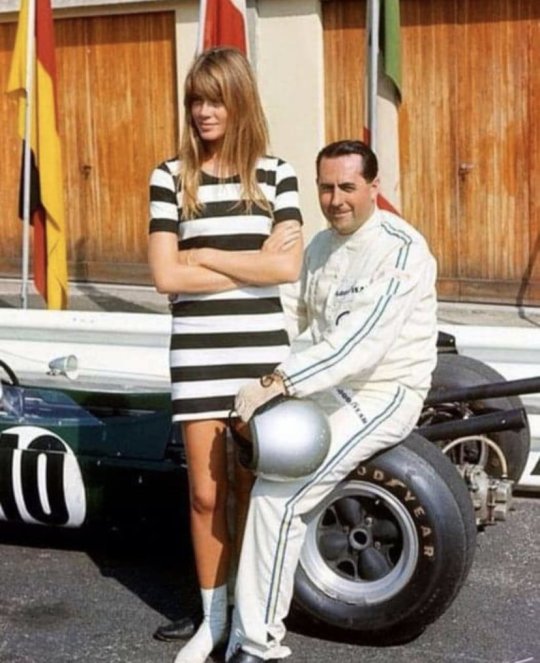
On track he was always the toughest of tough competitors, tough sometimes to the point at which I’d wonder how could such a nice bloke out of a car grow such horns and a tail inside one,
Stirling Moss on Jack Brabham
Sir Jack Brabham's three world championships ( 1959, 1960, 1966) were the product of both his engineering expertise and driving skill. His first two titles, in rear-engined Coopers he helped develop, confirmed the obsolescence of front-engined Formula One cars. His third title, in a Brabham, made him the only driver to become champion in a car of his own make. His last win came at the 1970 South African Grand Prix, after which, aged 44 and with 126 races behind him, the triple champion retired to Australia. His now-defunct team was sold to future Formula One supremo Bernie Ecclestone while Ron Dennis, Brabham’s erstwhile chief mechanic, went on to transform McLaren.
At 18 he joined the Royal Australian Air Force in Adelaide, where he wanted to learn to fly but was instead trained to fill a wartime shortage of flight mechanics. Upon his discharge, in 1946, an uncle in the construction business built him a workshop in Sydney, where Jack opened his own engineering establishment.
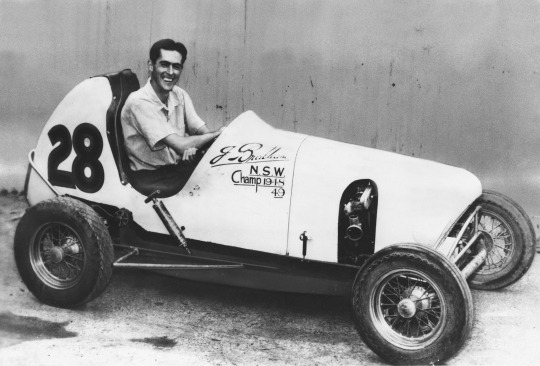
Jack's introduction to motorsport came through a friend who raced midgets on dirt track ovals in 1951. Jack helped him build a new car and when his friend decided to stop driving Jack took over and became a regular winner. In self-prepared midgets he won four successive Australian championships and was the 1953 hillclimb champion in a British-built Cooper-Bristol. Two years later his growing ambition to expand his motorsport horizons brought Jack to England. A meeting with John and Charles Cooper, constructors of his successful Australian car, led to a friendship and partnership that would propel the tiny Cooper Car Company and 'Black Jack' Brabham into the forefront of Formula One history.
With Brabham providing the inspiration (he helped persuade the Coopers to take the rear-engine route into Formula One racing) and the perspiration (he built up his first chassis in Cooper's workshop) the tiny British cars with the engines in the back sped to the front in an era previously dominated by big, front-engined Italian and German roadsters.
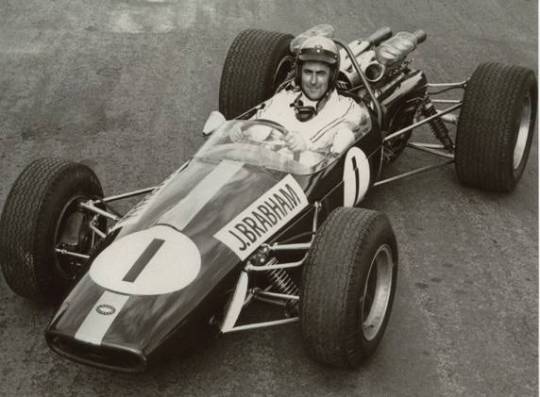
In the Brabham-led team's first full championship season of 1958 the debut win for a Cooper came courtesy of Stirling Moss, who drove Rob Walker's private entry to victory in Argentina.
In 1959 Moss won twice, but Brabham's victories in Monaco and Britain together with his consistently high placings resulted in the Australian winning a drivers’ title that some thought owed more to stealth than skill, an opinion at least partly based on Brabham's low-key presence.
As much an engineer as a racing driver, with wartime experience working as ground crew in the Royal Australian Air Force, Brabham was never one to hog the limelight or seek attention. Always a man of few words - his nickname 'Black Jack' referred to both his dark hair and his propensity for maintaining a shadowy silence - he avoided small talk and was undemonstrative in the extreme.

Brabham may not have been a big talker or particularly flamboyant but he was as shrewd as they come. Behind the wheel he was anything but shy and retiring. He put his head down and drove exceedingly forcefully, opposite-locking his car dirt-track style, and was not averse to deliberately showering gravel in the face of a too closely following pursuer. His aversion for the limelight became more of a problem in 1960, when he completely dominated the nine-race series, winning consecutively in Holland, Belgium, France, Britain and Portugal, en route to his second successive championship.
Following an unproductive 1961 season, when the Ferraris were all powerful, Brabham left Cooper to form Motor Racing Developments, in partnership with the talented Australian designer Ron Tauranac. The MRD Brabhams were quickly successful in several categories of racing, particularly Formula Two where for several years they dominated, affording the opportunity for many drivers to advance their careers. The Brabham Formula One car, which first appeared late in 1962, became steadily more competitive as the team leader personally perfected the chassis set-up and fine-tuned the Climax engines. In 1964 Brabham had the satisfaction of seeing his team mate Dan Gurney win in France and Mexico.
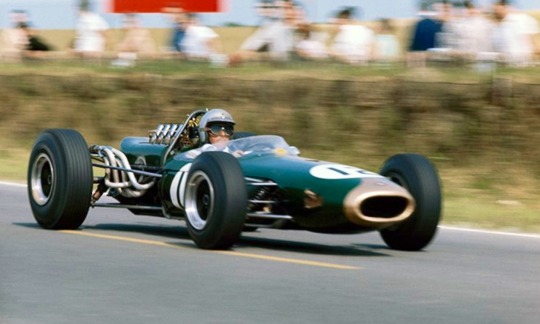
For 1966, when the new 3-litre formula came into effect, Brabham persuaded an Australian company Repco (a manufacturer of automotive components) to produce a Formula One engine from a venerable Oldsmobile V8 design. Equally ancient was Brabham himself, or so it seemed to the media and his much younger rivals who used to kid him about his age. Prior to the 1966 Dutch Grand Prix, his first race after his 40th birthday, 'Geriatric Jack' Brabham hobbled onto the starting grid at Zandvoort, wearing a long false beard and leaning on a cane. Sportingly, several of his laughing opponents helped him into the cockpit of his Brabham-Repco, which happened to be on pole position.
Tossing aside his beard and cane Brabham proceeded to win that race, a feat he also accomplished in France, in Britain and in Germany - on the notoriously difficult and dangerous Nurburgring - a victory he felt was the most satisfying of his career. Thus in 1966 Brabham became the first (and still only) driver, to win the championship in a car of his own make.
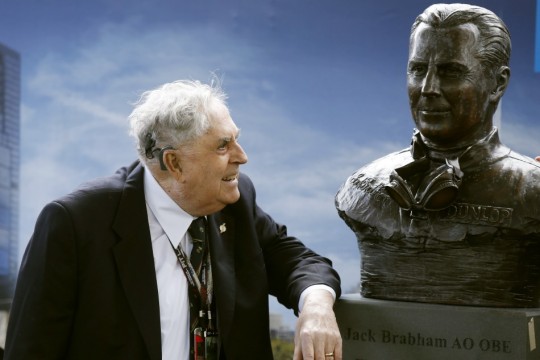
Jack Brabham, whose final victory came in the 1970 South African Grand Prix when he was 44, chose that season to retire as a driver. The Brabham team was sold to Bernie Ecclestone and Jack returned home to Australia, where he busied himself running a farm, a car dealership and an aviation company, and helped his sons with their racing careers. His contribution to British motorsport was officially recognised in 1985 and he became Sir Jack Brabham. He passed away peacefully at his home in May 2014, aged 88.
Photo above: Françoise Hardy (Singer), Jack Brabham and the Brabham BT19, Monza, 1966.
#stiling moss#quote#jack brabham#brabham#formula one#F1 racing#grand prix#australian#racing driver#racing car#design#motorsports#cooper#speed#adrenaline rush#francoise hardy#icon
52 notes
·
View notes
Text
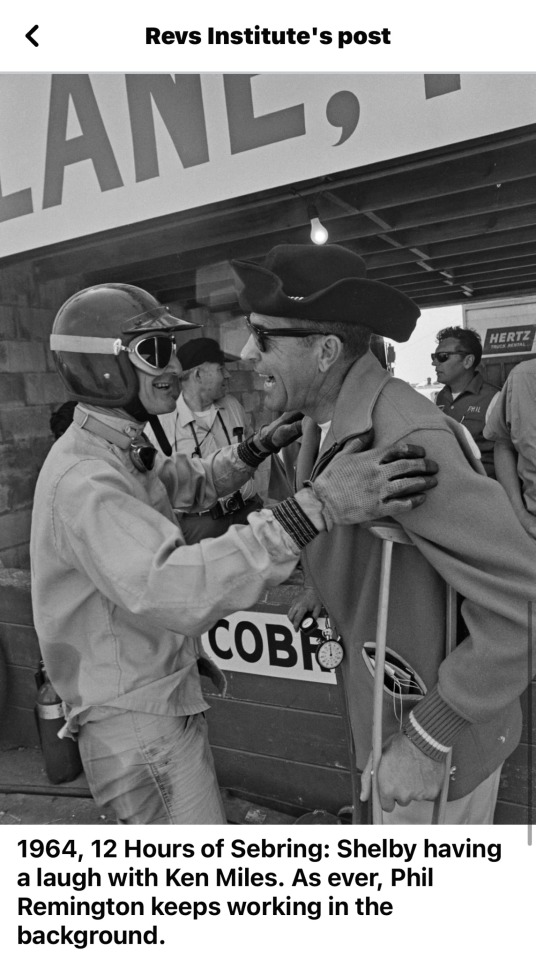
Carroll Shelby was born #OnThisDay in 1923 in Leesburg, Texas. As a driver, Shelby won the 1959 24 Hours of Le Mans (with Roy Salvadori). As a constructor, he returned to the Circuit de la Sarthe to shepherd the Ford GT40 victory in 1966 and 1967. With his big grin and black cowboy hat, Shelby brought a touch of Texan good ol' boy to every deal he made... and he made quite a few deals. According to his autobiography, "[W]inning the Twenty-four Hours was probably the greatest thrill I ever got out of racing. I can think of plenty of other races that carry their quota of thrills for the winner, but when you win this one it kind of gives you license to go out and tell people you're good, and that often helps get some other deals together." Some of those deals gave the world the Shelby Mustang and the Cobra. In 1965, the Shelby American Cobra won the International Championship for GT Manufacturers. Not too bad for guy who didn't start driving professionally until he was 29 years old! All photos from Revs Digital Library. #gt40 #cobra #shelbyamerican #lemans #revsinstitute
11 notes
·
View notes
Text
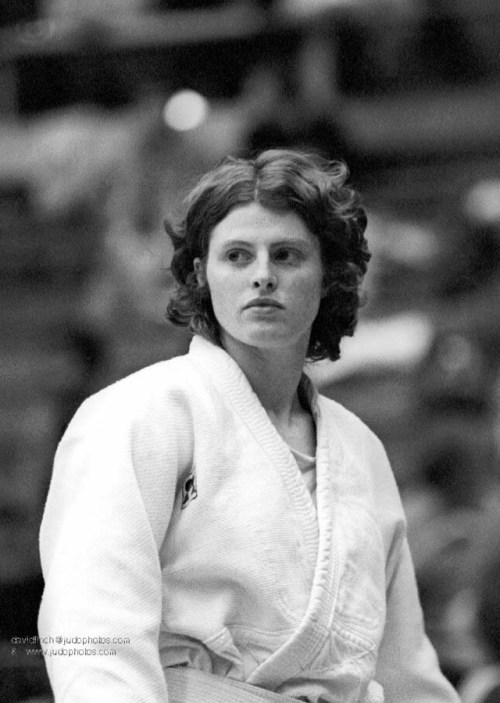
Rena Kanokogi inspired the sports world to think differently about the notion of women in competitive sports. As a young girl, she learned judo from somebody in her Brooklyn neighbourhood. Her desires to compete in the city’s judo clubs were met by resistance; the club owners told Rena that judo was a man’s sport and that women were too frail and weak to compete.
Not one to quit on her goals, in 1959, Rena posed as a man to enter the New York State YMCA judo championships. Not only did Rena prove herself as an equal, she beat every single man she fought and won a gold medal. After being asked if she was a woman, she was forced to return the medal. “Had I said no, I don’t think women’s judo would have been in the Olympics. It instilled a feeling in me that no woman should have to go through this again,” she said.
With no options to compete in the United States, Rena went to Tokyo where she became the first woman at he main dojo. It was here that she met her husband, Ryohei Kanokogi. The duo soon returned to the United States where they started to coach judo and build the sport for women. In 1964, judo became an Olympic sport for men; Rena responded by threatening legal action if women were not treated equally and allowed to participate.
Women’s judo eventually became an Olympic sport in 1984 with Rena as the U.S. coach.
166 notes
·
View notes
Text
my onesided beef with the f1 wikipedia pages
entirely silly and not at all long time enemy building over hundreds of hours trawling through the pages of the f1 wiki...
1. URL INCONSITENCY


The base URL of the season pages changes format randomly between 1980 and 1981. Why. i dont understand. this prevents people from simply editing the year in the url to get to the new page. why. i just want to know
2. FORMATTING
The column widths are often inconsistent between seasons and sometimes even inbetween races. Look at the table for the 1957 Standings:

whilst it Could make sense in the 50s when drivers shared cars and therefore results, wikipedia literally does it for the Season After That, where the columns are a lovely standardised size, despite the shared results.

And when the entire column for the driver names is double length (firstname and surname on different rows), it makes checking the results from those seasons an Awful experience.
They also have no reason for this, as for the more recent seasons with 20+ races, they either make the table go off screen (e.g. 2021) or implemented the ability to scroll the table left to right (2022+)


This is also an issue with the Entries/Driver and Constructor Tables, which results in large empty spaces being left near the beginning of the page for a handful of seasons (e.g. 1981, 1989)


3. CONSTRUCTORS TABLE
this caused a spreadsheet rage quit at one point in my life.
In 2014 after the drivers were able to have customised driver numbers, the consutructors championship table switched from recording results for each driver in each team seperately


to grouping and sorting the teams performance per race. for a reason I do not know.
it really doesn't matter unless you dont Realise they did this and you record 4 seasons worth of team results for a spreadsheet by hand and realise you have to redo it all. ouch
4. CONTENTS LIST/LAYOUT
When you navigate through similar pages everyday, you assume you know where everything is. if you try to do this with the f1 wiki pages, you are proved a fool frequently.
There are Inconsistent Section Header Names and Grouping (often switching between having regulation changes being its own Header to part of the race by race season report). They cant seem to decide on a consistent format, or what consitutes a Header, a Subtitle or just to be mixed in with everything else



(1989,2007,2020)
They are infact so inconsistent, here is a list of All the Names they use for the Same Thing:
Championship Summary (1950, 1952)
World Championship Season Summary (1951)
Championship Report (1953-1956, 1958-1959, 1962-1970, 1972, 1973)
Season Summary (1957, 1971, 1997-1999, 2001, 2003, 2020-2024)
Season Review (1960-1961, 1979, 1995)
Season Report (1974-1978, 1980-1990, 1996, 2004-2007,2013-2019)
Race-by-Race (1991-1994)
Report (2000, 2008-2011)
Race Summaries (2012)
N/A: 2002
Heres a visual aid i made because its so weird

IN CONCLUSION
I have missed some things off this list due to a) this being too long and incomprehensible already, and b) i forgot.
Anyways. All to say I spend too long on this wiki and I would just appreciate some consistency aorund here. I don't know how you become a Wikipedia editor but as soon as i figure it out maybe i can fix all of this. Hopefully someone enjoyed reading through all of this!
#wiggles overshares#Wikipedia#Formula one#wiggles data#anyways i didnt mean for this to become so long#i can Bet on the fact that no one else on the planet has also noticed everything here.#bc i must be in the top 0.1% of ppl who visit these pages#There are factors that explain a little bit of these.#what i wont stand for is the first one abt url. PLZ its the Most annoying thing ever in the smallest way. i Dont Understand.#ok ive just done my first edits we shall see what transpires
3 notes
·
View notes
Text
A Brief History of Aston Martin in Formula 1

While most F1 fans will know Aston Martin as the latest iteration of ‘Team Silverstone’, the car manufacturer had a very brief spell as a constructor in 1959 and 1960, in which they build their own engine as well as the car chassis. Like many British based teams their cars were painted in British racing green, which continues to be the team’s main livery colour today.
While Aston Martin didn’t score any points across their five entries, the team did net 4 top 10 finishes, with the team’s best result being Roy Salvadori’s 6th place finished at the British and Portuguese Grand Prix in 1959, and 2nd at the non-championship BRDC International Trophy in the same year.
However the team’s poor run of form led Aston Martin to drop out of F1 after the 1960 British Grand Prix.
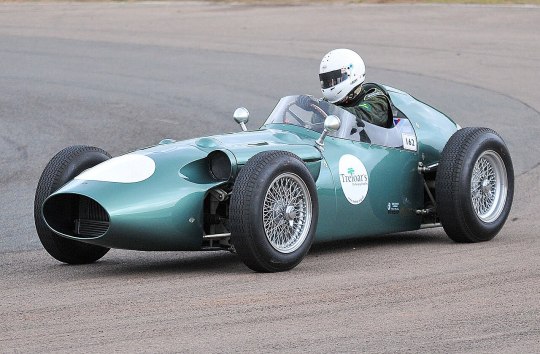
The Aston Martin DBR4, originally driven by Roy Salvadori and Carrol Shelby in 1959
Aston Martin first returned to F1 as a sponsor of the Red Bull team in 2016, including a spell as title sponsor from 2018-2020. In January 2020 Racing Point team owner Lawrence Stroll took a 16.7% stake in the British car brand, which led to the decision to re-brand the team to Aston Martin for the 2021 season.
The 'Team Silverstone’ moniker comes from the various re-bands of the team that was originally founded by Eddie Jordan, who opted to locate the Jordan team factory directly opposite the Silverstone circuit in Northamptonshire.
While the various Team Silverstone team names could have their own post, the timeline goes as follows:
Jordan (1991-2005)Midland F1 (2006) Spyker (2007) Force India (2008-2018) Racing Point Force India (2018) Racing Point (2019-2020) Aston Martin (2021-)

The AMR22, driven by Sebastian Vettel during the 2022 Austrian Grand Prix
Since 2021 Aston Martin have used Mercedes engines, which Team Silverstone have used in their various guises since 2009.
Aston Martin’s first driver line-up in 61 years featured German 4-Time World Champion Sebastian Vettel, and Canadian driver Lance Stroll - who scored Aston Martin’s first ever world championship points finish when he finished in 10th place at the season opening Bahrain Grand Prix in 2021.
In the same season, Sebastian Vettel achieved Aston Martin’s maiden podium finish at the Azerbaijan Grand Prix, where he finished second. He also finished second at the Hungarian Grand Prix, but was disqualified after the race due to a fuel infringement.
2023 saw Aston Martin’s best ever season to-date, with Fernando Alonso achieving 8 podiums - including three in the first three races - which led the team to secure 5th in the Constructor’s Championship.

The AMR23, driven by Fernando Alonso during the 2023 Sao Paulo Grand Prix
Their driver live-up for the 2024 season will see Fernando Alonso and Lance Stroll be teammates for a second consecutive season. Their line-up also includes reserve drivers Felipe Drugovich and Stoffel Vandoorne, alongside driver ambassador Jessica Hawkins, who became the first female racing driver to drive a Formula 1 car, the AMR21, at an in-season test in 2023.
Outside of the team, Aston Martin are also joint providers of the Safety and Medical cars, which they share with Mercedes.

13 notes
·
View notes
Text
On This Day in F1: February 7th
Present: Alpine Car Launch
History: 1960 Argentine Grand Prix
February 7, 2024 marks the Alpine car launch. With almost a month of teasing a pink camo livery, there were high hopes. But alas, all F1 teams disappoint.
Instead they launched a car that is almost all bare carbon fibre with some parts that are pink and blue. But this is the actual A524 and not the A523 with the 2024 livery slapped on it, so that’s a bonus.


Additionally Pierre Gasly turned 28 today.
64 years ago, in 1960, the Argentine Grand Prix took place in Buenos Aires at the Autodromo Municipal Ciudad de Buenos Aires. It was the first race of the 1960 season.

Stirling Moss started the race on pole position, but had to retire his car due to a suspension issue on lap 1. He went onto share a drive with Maurice Trintignant. The two placed 3rd, but received no points for their shared drive due to the regulations at the time.
Cliff Allison finished 2nd while driving for Ferrari and at no point did he lead the race. This was his first and only podium, as well as the last of his 3 point finishes during his Formula 1 career.
Bruce McLaren won the Grand Prix. It was his second consecutive victory after winning his first ever Grand Prix at the last race of the 1959 season — Sebring.
The 1960 Argentine Grand Prix was the last race for Ferrari’s first ever win in a Formula 1 World Championship — José Froilán Gonz��lez.
_____________
Previous: Feb. 5th — Caterham Announces Auction
Next: Feb. 8th - Visa Cash App RB Car Launch
On This Day in F1 Masterlist
Some Housekeeping: Due to time zones and the Visa Cash App RB Car Launch being set for night time in Vegas, I will not be posting the On This Day in F1 for Feb. 8th until Feb. 9th EST
7 notes
·
View notes
Text

Attention to all StEx fans! Here come some characters I spoke about in some headcanons, but never bothered to draw until now!
🌹Tudor Rose's design is very Tudor-dinasty inspired, and she was the Welsh National engine from 1959 to 1964, when the Royal Family chose her as Royal Engine after winning the 1964 World Championship Railroad Race in Greece. She and Milton Keynes met after the 1984 Championship, fell in love, and eventually had Princey (who became the Royal Engine in 1990) and Unity (who was stolen by Ukip in 2003, renamed Brexit, and forced to be Nigel Farage's personal engine until 2015, when a Scottish Stationmistress saved him and kept him safe until 2018... but this is another story.)
💠Sapphire is inspired by 1997 On Ice! Pearl and Kristi Yamagutchi, who skate to a short medley of the musical with Rudi Galindo in 1990, as shown HERE. I accidentally made her look like the Asian lovechild of Elsa and Cinderella, and I'm proud of it. Also, she and Canuck work together in Canada, and are a couple.
💎Diamond's design is inspired both by Pearl's costumes in the Joburgh (hair pin, choker and puffy sleeves) and Tuacahn (the overskirt-cage thing and the gloves) productions, and was, by far, the hardest to draw and color. She's currently working on a private railway in Western USA.
9 notes
·
View notes